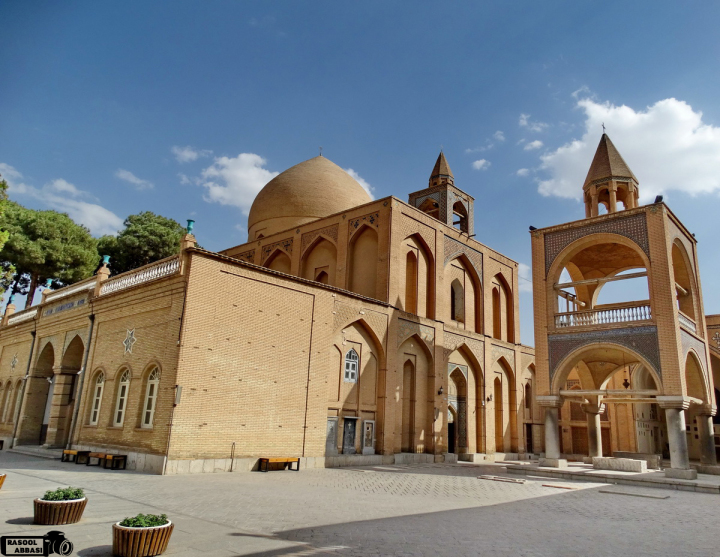The Armenians started coming to Madras (old Chennai) around the 16th century. Most of them migrated from Julfa, a suburb of Isfahan in Persia, because Madras was fast becoming a cosmopolitan trade centre. Their community networks extended all over the world and they dominated the Indo-Spanish trade. The British in India loved them because they improved the economy without threatening them politically — unlike the Portuguese, Dutch and French. Some early Armenians even lived inside the British settlement at Fort St. George: like Coja Petrus Uscan, the famous Armenian patriarch.

Petrus had arrived from Manila, Philippines in 1723 and promptly endeared himself to the local Indian King, the Arcot Nawab. He also became a Councillor in the British East India Company. He supported the Nawab and the British in diplomatic and financial matters and became very rich and influential in Madras. However, misfortune struck in 1746 when the French captured Madras. Petrus managed to escape to Tranquebar, the Danish colony, but the French seized a considerable portion of his business assets. The French Governor was intent on breaking British dominance in Indian trade, so he made a strange offer: if Petrus shifted his entire trade to the French colony of Pondicherry, he would get his assets back; otherwise, he could forget his assets forever.
A lesser man would have accepted the offer. Not Petrus! He would rather lose his wealth than betray his friends: after all, the British had encouraged his business. He not only rejected the offer, but also cheekily advised the ambitious French Governor: confiscate my property if you must, but consider redistributing it among the poor; surely, the great French Government is not so desperate to need my assets? The British repossessed Madras in 1749 and Petrus was warmly welcomed back. He had lost considerable wealth, but his honour had multiplied.
Loyalty was not his only virtue. He donated wealth liberally. He contributed generously to the construction of St. Rita’s Church in Santhome. For the benefit of pilgrims to St Thomas Mount, he constructed a step-way up the hillock; he built the first bridge across the Adyar river at Madras (the modern Maraimalai Bridge has since replaced it) so that devotees could ford the river easily. The bridge cost him Rs. 100,000 (a whopping sum those days), and he topped it by providing Rs. 10,000 in trust for the annual maintenance of the chapel and the bridge. Deeply religious, Petrus worshipped at the Chapel of Our Lady of Miracles in Vepery, which he owned privately.

When he died in 1751, he was buried in the same chapel. According to folklore, his heart was carved out and buried in his beloved birthplace — Julfa in Isfahan! This seems unlikely, though. Petrus had no children and his wife inherited his wealth (which was considerable despite the French). When she died, she left it all to charity. If you visit the serene Armenian Church of St. Mary in the Armenian Street, you can see a plaque honouring the noble Armenian.
Trivia: The Armenians of Madras lived in the Armenian Street of George Town. By more than a coincidence, there is an Armenian street in the George Town area of Penang (Malaysia) too! And, there are at least 50 cities in the world, which have a street named after Armenia. This is but natural: for centuries, the Armenians have been doing business from these streets. There are more Armenians outside Armenia (9 million) than inside Armenia (3 million).
If you would like to visit the old Armenian church, do sign up for our Steeple-chase trail through the churches of Chennai.

Archives
- January 2022
- December 2021
- November 2021
- August 2021
- March 2021
- February 2021
- January 2021
- December 2020
- November 2020
- October 2020
- September 2020
- August 2020
- April 2020
- March 2020
- February 2020
- January 2020
- November 2019
- October 2019
- September 2019
- August 2019
- July 2019
- June 2019
- August 2017
- February 2017
- January 2017
- October 2013
Featured Posts
- Tales that pots tell: Keeladi excavations AUGUST 18, 2021
- The Last Grand Nawab: Wallajah FEBRUARY 10, 2021
- How Tej Singh became Raja Desingu of Gingee FEBRUARY 5, 2021
- How Shahjahan seized the Mughal throne JANUARY 28, 2021
- Alai Darwaza – Qutub Minar Complex, Delhi NOVEMBER 21, 2020
- Marking History through British buildings NOVEMBER 17, 2020
- The last great queen of Travancore NOVEMBER 7, 2020
- Brahmi and the evolution of scripts OCTOBER 15, 2020
- The Cambodian King of Kanchipuram OCTOBER 14, 2020
- James Prinsep – the man who read the writing on the wall OCTOBER 10, 2020
- Mariamman – the Village Goddess who travelled SEPTEMBER 30, 2020
- Misnamed Monuments of Mamallapuram SEPTEMBER 28, 2020








